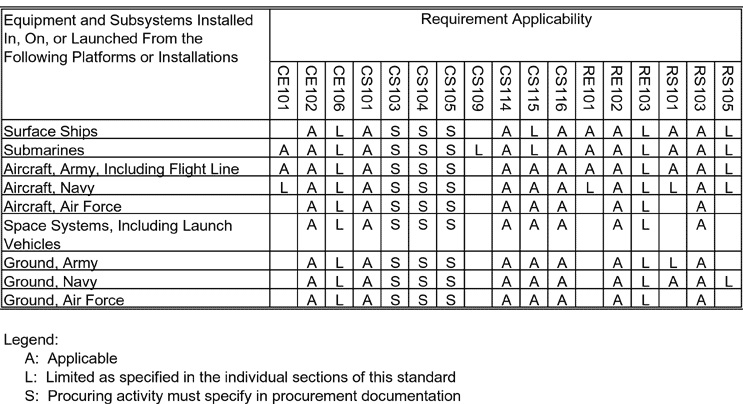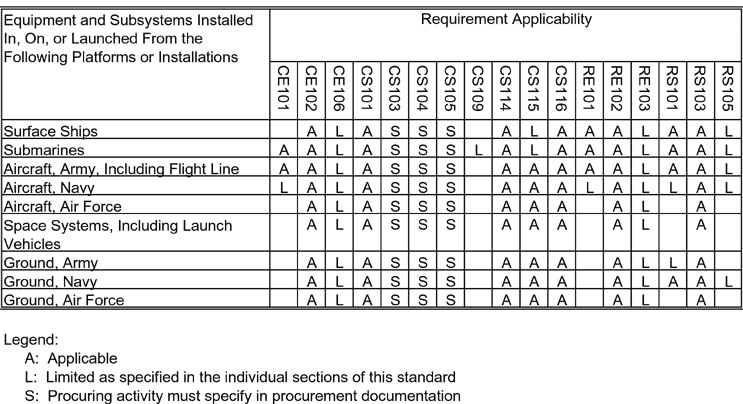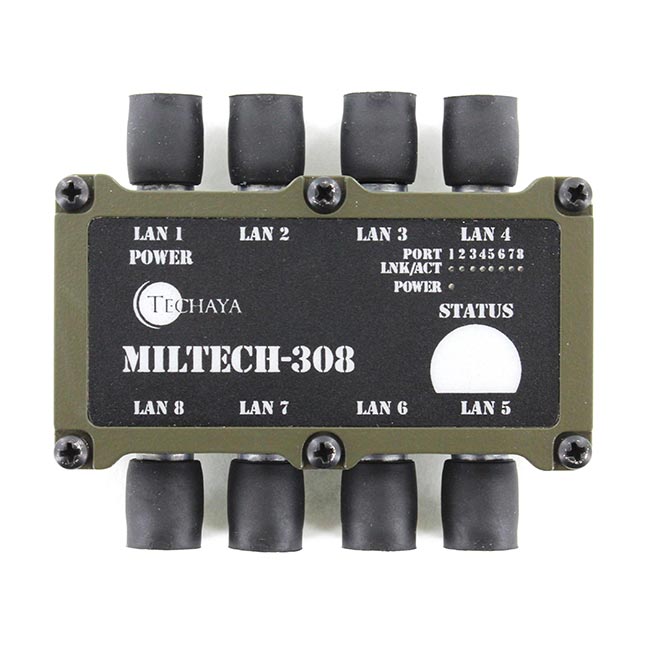Since Techaya’s line of military-grade Ethernet switches are built from the ground up to meet the major military requirements, we are often asked to define what some of the particular specifications are that our Ethernet switches comply to. We recently discussed MIL-STD 1275 which defines the characteristics of a 28 VDC power system. Today we’re going to discuss MIL-STD-461 which is a US military standard that describes how to test equipment for electromagnetic compatibility.
Wireless and RF are becoming commonplace for most of today’s communications. We all seem to understand the concept of RF interference—multiple devices within a small radius of each other can often produce interference for one another and degrade the performance of each device. Similarly, electromagnetic compatibility (EMC) is the “unintentional generation, propagation and reception of electromagnetic energy” and what the effect of the unintentional energy may have to other devices (electromagnetic interference, or EMI). The goal of EMC is to ensure that equipment can operate correctly and without interference from each other within the same electromagnetic environment (EME).
The goal of MIL-STD 461 is to provide reasonable confidence that a subsystem or piece of equipment complying with these requirements will function within their designated design tolerances when operating in their intended environment. Various revisions of MIL-STD-461 have been released and each branch of the armed services; Army, Navy, Air Force and NASA have identified specific requirements that are applicable to the specific needs and applications. All devices, components, ships, weapons, aircraft, ground and support equipment, electrical and electronic systems that are used in a military or aerospace applications are subject to meeting the requirements established in MIL-STD-461. However, not all applications require the same level of testing as you can see from this table.

MIL-STD 461 testing usually includes a varying degree of the following testing criteria:
- Conducted Emissions Test which refers to the mechanism that enables electromagnetic energy to be created in an electronic device and coupled to its AC power cord–electromagnetic energy that is coupled to a product’s power cord can find its way to the entire power distribution network that the product is connected to and use the larger network to radiate more efficiently than the product could by itself. Other electronic devices can then receive the electromagnetic interference.
- Conducted Susceptibility Test which refers to the product’s ability to withstand interference from conducted emissions
- Radiated Emissions Test which refers to the unintentional release of electromagnetic energy from an electronic device
- Radiated Susceptibility Test which refers to the product’s ability to withstand interference from radiated emissions
Currently, most military contracts require compliance to MIL-STD-461E but in 2013 a newer revision, “MIL-STD-461F” was released. While MIL-STD-461 compliance is technically not required outside the US military, many non-military organizations test to the standard because it meets or exceeds similar regulations such as FCC Part 15 and EMC standards of other countries.
In today’s space constrained environments that must hold more and more electronic elements, it’s safe to say that there is the possibility that devices that don’t comply with MIL-STD 461 could cause interference with each and degrade performance. To ensure that your system is fully functional in these harsh environments, look to MIL-STD-461 compliance for all of your devices.


